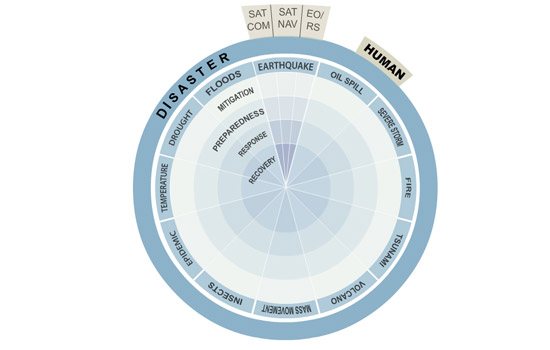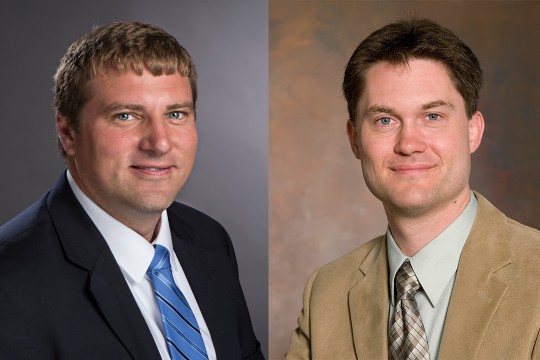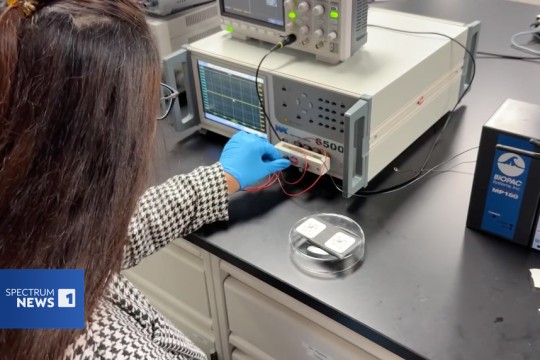New information tool will aid disaster management
Web-based tool gives disaster managers rapid information access
The Space Application Matrix, a tool that the United Nations uses to aid disaster management, was developed by Brian Tomaszewski, an assistant professor of information sciences and technologies, and two RIT students.
The next time a tsunami strikes in Asia, a flood ravages Africa or planning is made to mitigate the impact of potential hurricanes in the United States, disaster managers will have a new tool to quickly access information on how space-based technologies can be used to help the situation—thanks largely to the work done by an RIT professor and his students.
Brian Tomaszewski, an assistant professor in RIT’s Department of Information Sciences and Technologies, and several students have teamed with the United Nations Platform for Space-based Information for Disaster Management and Emergency Response group, or UN-SPIDER, to create a Web-based tool that provides information, communication and process report to disaster managers. This tool, called the Space Application Matrix, takes existing information maintained by the United Nations—mostly case studies, guides and product information—and makes it easier to use.
“The Space Application Matrix has an intuitive, visual interface as opposed to the keyword searches that were used before,” says Tomaszewski. “The information is now much easier to access.”
The tool allows users to select from a variety of catastrophes, ranging from fires to oil spills and epidemics, to see how disaster managers can utilize space-based technologies in the various phases of the disaster management cycle (mitigation, preparedness, response and recovery). These technologies include satellite communication—useful when there is no cell phone coverage in an area—satellite navigation and Earth observation/remote sensing technologies.
Tomaszewski began working on the tool, which was created in Flash, in the summer of 2009 with the help of RIT students. He then spent three months in Bonn, Germany, in spring of 2010 immersed in the knowledge portal and other geographic information science and technology projects for the U.N. It was finally completed in January, after he recruited information sciences and technologies students Joseph Spens and Beytullah Sarcia to put the finishing touches on the project.
Tomaszewski, who has a Ph.D. in geography, finds the U.N. to be a perfect match for his research interests.
“Geographic information science and technology is very relevant to what the U.N. does. I think it’s the only place where I’ve met other people who have the same degree I do,” he says. “And the U.N. provides numerous research opportunities.”
But his passion for these projects extends beyond his education and professional interests.
“I want to feel like what I do is making a difference in the world,” he says.













